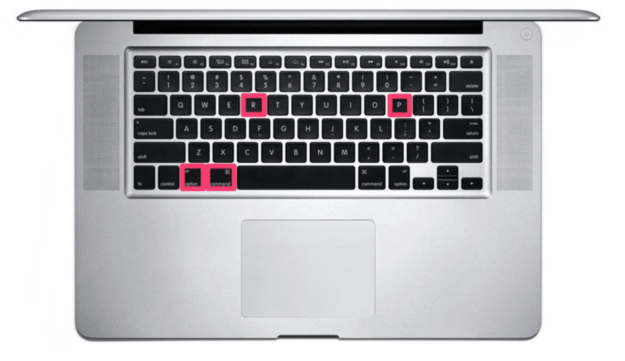
Over the past couple of weeks I have been surprised on several occasions to find my iMac (Retina 5K, 27-inch, Late 2014) switched off. I normally leave it running, with power-saving enabled, so all I have to do is wake it. I didn’t pay much attention at first, suspecting the possibility a brief power outage. But then it began to happen more frequently.
Yesterday, after my return from Biévres, the iMac began to switch off frequently, too frequently for coincidence. Every time it restarted automatically but froze as the various start-up programs were loading. Eventually it was locking up almost immediately after starting up. As a Mac user for some 11 years, I had never experienced this behaviour before. I was fully prepared for a visit to the Genius Bar and, before you ask, I do have up-to-date backups so it would be no hardship if Apple wanted to trash the disk.
As a final resort, though, I decided to reset the PRAM or Parameter Random Access Memory. This controls a whole host of core stuff that you wouldn’t normally want to mess with. But resetting the PRAM is often a way of overcoming unusual manifestations such as the one I’ve been experienced. The good news is that it worked.
Refresher course
Before doing this—after all it isn’t something you do every day and I needed a refresher course—I checked the procedure. This article at trendblog covers all bases, including battery-powered MacBooks and Pros. With battery-powered Macs there are extra steps, but for mains-powered iMacs, Mac Pros and minis the procedure is simple:
- Shut down your Mac
- Press the power button and then immediately →
- Press and hold Option-Command-P-R
- Hold until you hear the startup sound twice
- Release the buttons and let your Mac turn on normally
The bit about listening for the startup gong to sound twice is interesting. Other guides I’ve seen mention waiting for it to sound only once. I recollect that last time I reset the PRAM I waited only for one startup sound. Still, I held down the keys for a good minute after the gong sounded for the first time and, just when I was about to give up, it sounded again and the computer shut down. When I restarted the machine, all was working without any initial problems. It’s business as normal and I’m glad I’ve been spared the unwelcome prospect of lugging the very heavy iMac to the nearest Genius Bar.
If ever you get unusual happens with a Mac it is worth giving the reset PRAM routine a spin before taking more drastic action. According to the experts at trendblog this simple action can solve many annoying problems.
Note: Before resetting the PRAM or carrying out other investigations I recommend unmounting all external disks and USB connections other than the mouse and keyboard cables (if present).
_______________
- Subscribe to Macfilos for free updates on articles as they are published. Read more here
- Want to make a comment on this article but having problems? Please read this

I have never heard of PRAM let alone find it to reset! How they miss burning you at the stake as a Warlock?
Ah, it’s the three cauldrons I keep in the backyard
I claim no credit.
Thanks for reminding me Mike, I have just backed up music and photos for first time since April, 6.5GB of new music and 39.5GB of new photos. Since I bought my first Mac, I have been using Chronosync for this function… Time machine does the rest.
I would have been rather upset to have lost all of that new and/or modified data if one of my SSD’s had failed. One becomes smug, having spent years not expecting a PC to run well for more than about three weeks, then to realise that Mac’s run seemingly for ever without a problem.
You are right. I am paranoid about losing stuff and as a result I have a fairly complex array of backup disks in addition to TimeMachine (which I have never entirely trusted for no good reason). In addition to several independent backups I have a large external drive to host my Lightroom database which is far too large for the computer main disk. This, in turn has to be cloned to a second drive , plus a third one which I keep offsite and connect every couple of weeks or so. You can never have too many backups.
But I did add a rider to this article after publishing this morning. Before resetting the PRAM and undertaking other investigations, it’s important to disconnect all those external drives. After making sure the PRAM reset had solved the main problem I have been reconnecting the drives in a leisurely sequence to find out if any of them could have been the original culprit.
I use Carbon Copy Cloner simply because I am used to it and find it utterly reliable. I have tried ChronoSync and SuperDuper! and both are good alternatives.